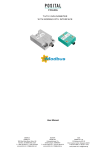Download user manual tiltix mems inclinometer with canopen
Transcript
USER MANUAL TILTIX MEMS INCLI NO METER W ITH CANOPEN IN TERFACE AMERICAS FRABA Inc. 1800 East State Street, Suite 148 Hamilton, NJ 08609-2020, USA T +1 609 750-8705, F +1 609 750-8703 www.posital.com, [email protected] EUROPE FRABA AG Carlswerkstrasse 13c 51063 Cologne, GERMANY T +49 221 96213-0, F +49 221 96213-20 www.posital.com, [email protected] ASIA FRABA Pte. Ltd. 20 Kallang Avenue Singapore 339411, SINGAPORE T +65 6514 8880, F +65 6271 1792 www.posital.com, [email protected] USER MANUAL TILTIX MEMS INCLI NO METER W ITH CANOPEN IN TERFACE 1 Inhaltsverzeichnis 1 2 Inhaltsverzeichnis ......................................... 2 General Safety Advice.................................. 4 2.1 Important Information ........................... 4 3 About this Manual ........................................ 5 3.1 Background .......................................... 5 7.9 Object 1801h: 2nd Transmit PDO Communication Parameter ................. 18 7.10 Transmission Mode ............................ 19 7.11 Inhibit Time ......................................... 19 7.12 Event Timer ........................................ 19 7.13 Cyclic Timer........................................ 19 7.14 Object 1A00h: 1st Transmit PDO Mapping Parameter ............................ 20 Version Management ........................... 5 3.3 Imprint .................................................. 5 3.4 Copyright.............................................. 5 3.5 User Annotation ................................... 5 3.6 Document History ................................ 5 Introduction .................................................. 6 TILTIX .. Error! Bookmark not defined. 7.15 4.1 Object 1A01h: 2nd Transmit PDO Mapping Parameter ............................ 20 4.2 CANopen Interface .............................. 6 7.16 Types of SDO ..................................... 20 4.3 TILTIX CANopen .................................. 6 8 8.1 Working with Schneider PLC ...................... 22 Types of SDO ..................................... 22 4.4 Typical Applications of TILTIX.............. 7 TILTIX – Modes and Parameter ................... 8 Pre-Operational Mode .......................... 9 8.2 Types of SDO ..................................... 22 5.1 8.4 Software Project Information .............. 23 5.2 Operational Mode ................................ 9 8.5 Controller Description ......................... 23 5.3 Stopped Mode .................................... 10 8.6 CANopen Master Configuration ......... 23 5.4 Re-Initialization of the Inclinometer .... 10 8.7 Connection Network Setup ................. 24 5.5 Boot-up Procedur ............................... 11 9.1 Configuration .............................................. 25 TILTIX Process Data Objects (PDO) Mapping ............................................. 25 9.2 TILTIX CANopen Node Configuration 25 9.3 CANopen bus network configuratio .... 25 9.4 Linking of CANOpen Master and TILTIX Transmit-PDOs................................... 26 9.5 TILTIX & Controller Memory Configuration ...................................... 26 9.6 Debugging .......................................... 26 9.7 Run..................................................... 28 9.8 Resetting CANOpen Communication . 28 9.9 Resetting CANOpen Nodes ............... 28 9.10 Position Readout ................................ 29 9.11 Readout Using Animation Table ......... 29 5 5.6 7 Object 1800h: 1st Transmit PDO Communication Parameter ................. 18 3.2 4 6 7.8 Usage of Layer Settings Service (LSS) 11 Installation .................................................. 12 6.1 Accessories........................................ 12 6.2 Pin Assignement ................................ 12 6.3 Installation Precautions ...................... 12 6.4 Mounting Instructions ......................... 13 6.5 Bus Termination ................................. 13 6.6 Measurement Axes ............................ 14 TILTIX Software Configuration ................... 15 7.1 Default Factory Settings ..................... 15 7.2 Active Programming Objects .............. 15 7.3 Programmable Parameters ................ 16 7.4 Command Description........................ 16 7.5 Data Length of Commands ................ 16 7.6 Frequently Used Commands ............. 17 7.7 PDO Transmission ............................. 18 9 10 Frequently Asked Question ................... 31 ............................................................................ 35 11 Appendix A: TILTIX CANopen Objects . 36 11.1 Object 1000h: Device Type ................ 36 11.2 AMERICAS FRABA Inc. 1800 East State Street, Suite 148 Hamilton, NJ 08609-2020, USA T +1 609 750-8705, F +1 609 750-8703 www.posital.com, [email protected] Object 1001h: Error Register .............. 36 EUROPE FRABA AG Carlswerkstrasse 13c 51063 Cologne, GERMANY T +49 221 96213-0, F +49 221 96213-20 www.posital.com, [email protected] ASIA FRABA Pte. Ltd. 20 Kallang Avenue Singapore 339411, SINGAPORE T +65 6514 8880, F +65 6271 1792 www.posital.com, [email protected] USER MANUAL TILTIX MEMS INCLI NO METER W ITH CANOPEN IN TERFACE 11.3 Object 1003h: Pre-Defined Error Field36 11.34 Object 6023h: Slope Lateral16 Offset 49 11.4 Object 1005h: COB-ID Sync .............. 37 11.35 11.5 Object 1008h: Mfr Device Name ........ 37 Object 6024h: Differential Slope Lateral16 Offset .................................. 49 11.6 Object 1009h: Mfr Hardware Version . 37 11.36 Object 6114h: Differential Slope Long32 Offset (TILTIX360).............................. 50 11.7 Object 100Ah: Mfr Software Version .. 37 11.8 Object 100Ch: Guard Time ................ 37 12 12.1 Appendix B: Ordering Code .................. 54 TILTIX – Industrial .............................. 54 11.9 Object 100Dh: Life Time Factor ......... 38 12.2 TILTIX – Heavy-Duty .......................... 54 11.10 Object 1010h: Store Parameters ........ 38 11.11 Object 1011h: Restore Parameters .... 39 13 13.1 Appendix C: Output Graphs .................. 55 TILTIX 360: CANopen Output Values 55 11.12 Object 1014h: COB-ID Emergency .... 39 13.2 TILTIX 080 : CANopen Output Values 55 11.13 Object 1016h: Consumer Heartbeat Time ................................................... 40 11.14 Object 1017h: Producer Heartbeat Time 40 11.15 Object 1018: Identity Object ............... 40 11.16 Object 2200h: Cyclic Timer ................ 41 11.17 Object 2300h: Save Parameter with Reset.................................................. 41 11.18 Object 2600h: Preset X-Axis (80º Version) / Preset (360º Version)......... 41 11.19 Object 2601h: Preset Y-Axis (80º Version).............................................. 42 11.20 Object 3000h: Node Number ............. 42 11.21 Object 3001h: Baud rate .................... 43 11.22 Object 3002h: Termination Resistor ... 43 11.23 Object 3022h: Digital Recursive Filter 44 11.24 Object 3100h: Moving Average Filter . 44 11.25 Object 6000h: Resolution ................... 44 11.26 Object 6010h: Slope Long16.............. 45 11.27 Object 6011h: Slope Long16 Operating Parameter .......................................... 45 11.28 Object 6012h: Slope Long16 Preset Value .................................................. 46 11.29 Object 6013h: Slope Long16 Offset ... 46 11.30 Object 6014h: Differential Slope Long16 Offset ................................................. 47 11.31 Object 6020h: Slope Lateral16 ........... 47 11.32 Object 6021h: Slope Lateral16 Operating Parameter.......................... 48 11.33 Object 6022h: Slope Lateral16 Preset Value .................................................. 49 14 Glossary ................................................ 57 15 Check Out Some of the Other POSITAL Products 59 16 Disclaimer ............................................. 60 USER MANUAL TILTIX MEMS INCLI NO METER W ITH CANOPEN IN TERFACE 2 General Safety Advice 2.1 Important Information The addition of this symbol to a Read these instructions carefully, and have a look Danger or Warning safety label at the equipment to become familiar with the indicates that an electrical hazard device before trying to install, operate, or maintain exists, which will result in personal it. injury if the instructions are not followed. The following special messages may appear throughout this documentation or on the equipment This is the safety alert symbol. It is to warn of potential hazards or to call attention used to alert you to potential towards personal injury hazards. Obey all information that clarifies/simplifies a procedure. safety messages that follow this symbol to avoid possible injury or Please Note: Electrical equipment should be serviced only by qualified personnel. death. No responsibility is assumed by POSITAL for any consequences arising out of the use of this material. This document is not intended as an instruction manual for untrained personnel. Page 4 ACS CANopen User Manual Version: 20111031 USER MANUAL TILTIX MEMS INCLI NO METER W ITH CANOPEN IN TERFACE 3 About this Manual 3.1 Background This user manual explains how to install and interface configure the TILTIX inclinometer with a CANopen ® TWIDO PLC. 3.2 3.3 Version Management with illustrations from a Schneider Imprint - Updated On: 201110031 FRABA NV - Document Name: Jan Campertstraat 5, Manual_TILTIX_CANopen_General.pdf NL-6416 SG Heerlen T +49 221-96213-0 [email protected], www.fraba.com 3.4 Copyright CANopen® and CiA® are registered community to trademarks of CAN in Automation e.V. approval by FRABA N.V. Nor is any liability copy this documentation without written assumed for damages resulting from the use of the © FRABA N.V., all rights reserved – Claims information copyright on this documentation. It is not allowed publication and features described herein are to modify, extend, or hand over to a third party and subject to change without notice. 3.5 contained herein. Further, this User Annotation All readers are highly welcome to send us e-mail at the following e-mail addresses. For feedback and comments about this document. America [email protected], for Asia [email protected], Depending on your region you can reach us by for Europe [email protected]. 3.6 Document History Document Manual_TILTIX_CANopen_General.pdf Created 2011/10/31 Author ANA Reviewers MMO / DPR Versions First Release – 20111031 Page 5 ACS CANopen User Manual Version: 20111031 USER MANUAL TILTIX MEMS INCLI NO METER W ITH CANOPEN IN TERFACE 4 Introduction This manual explains how to install and configure and heavy duty applications. The TILTIX CANopen the TILTIX gravity referenced inclinometers with a is based on the DS410 standard. CANopen interface, suitable for industrial, military 4.1 TILTIX Inclinomter ACCELENS inclinometers sense and measure the The TILTIX series of inclinometers, both industrial angle of tilt (inclination/slope/elevation) of an object and heavy-duty lines, are available in two variants. with respect to the force of gravity. First, a single axis measurement variant with a range of 360° and the other variant, a dual axis The basic principle behind this TILTIX inclinometer measurement capable TILTIX model with a range is a Micro-Electro-Mechanical Systems (MEMS) of ±80°. sensor cell that is embedded to a fully molded ASIC. The angle is measured with the relative change in electrical capacitance in the MEMS cell. 4.2 CANopen Interface CANopen is based on the Controller Area Network In simple terms, CANopen works as a client-server (CAN) automotive model. Each device checks whether the bus is industries in the 80s. The application protocol free, and if it is free the device can send CANopen was introduced by the multi vendor messages. If two devices try to access the bus at association CAN in Automation (CiA) to ensure a the same time, the device with the higher priority full compatibility of industrial automation products. level has permission to send its message first. It is a multiple access system (maximum: 127 Devices with the lowest priority level must cancel devices), which means that all devices can access their data transfer and wait before re-trying to send the bus. These devices are the components of the their message. that was developed by CANopen bus. 4.3 TILTIX CANopen The TILTIX CANopen inclinometer corresponds to capable TILTIX model with a range of ±80°. In the CANopen addition to high resolution, accuracy and protection standards. It is available in industrial and heavy- class of IP69K, it has built-in active linearization duty and inclinometer housings, profile and two DS 410 measurement axes variants. The single axis measurement variant with temperature compensation. This makes TILTIX suitable for rugged environments and a range of 360° and a dual axis measurement Page 6 ACS CANopen User Manual Version: 20111031 USER MANUAL TILTIX MEMS INCLI NO METER W ITH CANOPEN IN TERFACE versatile applications in industrial, heavy duty and is received. The position value is sent military applications. every n SYNCs (n ≥ 1). - State change mode: The position value is The inclinometer supports the following operating transmitted whenever the position of the modes: inclinometerchanges (minimum time - interval settable). Polled mode: The position value is transmitted only on request. - - Cyclic mode: The position value is sent Various software tools for configuration and cyclically (regular, adjustable intervals) on parameter-setting are available from different the bus. suppliers. It is easy to align and program the SYNC mode: The position value is sent inclinometers using the EDS (electronic data after a synchronization message (SYNC) sheet) configuration file provided. (Refer to section 3.1) 4.4 Typical Applications of TILTIX - Cranes and Construction Machinery - Automated Guided Vehivles (AGV) - Medical Systems - Automatic Assembling Machinery - Elevated Platforms - Boring and Drilling Applications - Mobile Lifts and Fire Engines - Levelling and Flattening Page 7 ACS CANopen User Manual Version: 20111031 USER MANUAL TILTIX MEMS INCLI NO METER W ITH CANOPEN IN TERFACE 5 TILTIX – Modes and Parameter The purpose of this chapter is to describe the going available configuration parameters of the TILTIX describes useful technical terms and acronyms for inclinometers with CANopen interface. Before CANopen network communication. Node-ID into details the following information In the CAN network each device has a Node-ID that is used to address the device in the network and to define it’s priority of EDS (Electronic Data Sheet) An EDS file describes the communication properties of a device on the CAN network (baud rates, transmission types, I/O features, etc.). It is provided by the device manufacturer and is used in the configuration tool to configure a node (like a driver in an operating system). PDO (Process Data Object) CANopen frame containing I/O data. We distinguish between: Transmit-PDO (TPDO): data provided by a node Receive-PDO (RPDO): data to be consumed by a node The transmission direction is always seen from a node's point of view. SDO (Service Data Object) SDOs are typically used to read or write parameters while the application is running. COB-ID (Communication Object Each CANopen frame starts with a COB-ID working as the Identifier) Identifier. During the configuration phase, each node receives the COB-ID(s) for which it is the provider (or consumer). NMT (Network Management The NMT protocols are used to issue state machine change Transition) commands (i.e. to start and stop the devices), detect remote device boot ups and error conditions. Page 8 ACS CANopen User Manual Version: 20111031 USER MANUAL TILTIX MEMS INCLI NO METER W ITH CANOPEN IN TERFACE 5.1 Pre-Operational Mode If the device is in this state, its configuration can be If configuration is complete, the device goes into modified. However, only SDOs can be used to one of the following states on receiving the read or write device-related data. The device goes corresponding indication: into Pre-Operational Mode: - - After the power up - On receiving the Enter Pre-Operational "Stopped" on receiving the "Stop Remote Node" NMT indication - "Operational" on receiving the NMT indication, if it was in Operational "Start Remote Node" NMT indication Mode before To set a node to pre-operational mode, the master must send the following message: Identifier Byte 0 Byte 1 Description 0h 80 h 00 NMT-PreOp, All Nodes 0h 80 h NN NMT-PreOp, NN NN: Node Number 5.2 Operational Mode The device goes into the "Operational" state if it Note: was in the "Pre-Operational" state on receiving the "Operational" "Start Remote Node" indication. If the CANopen consequences and should therefore only be made network is started using the "Node Start" NMT in "Pre-Operational" mode. services in "Operational" state, all Modifications mode to the may configuration have in unexpected device functionalities can be used. Communication can To put one or all nodes in “Operational” mode, the use PDOs or SDOs. master has to send the following message: Identifier Byte 0 Byte 1 Description 0h 01h 00h NMT-Start, all nodes 0h 01h NN (in hex) NMT-Start, NN NN: Node Number Page 9 ACS CANopen User Manual Version: 20111031 USER MANUAL TILTIX MEMS INCLI NO METER W ITH CANOPEN IN TERFACE 5.3 Stopped Mode The device goes into the "Stopped" mode on write device-related data (SDO). Only the slave receiving the "Node Stop" indication (NMT service) monitoring function "Node Guarding" remains if it was in "Pre-Operational" or "Operational" active. To put one or all nodes in the ”Stopped” mode. In this mode, the device cannot be mode, the master has to send the following configured. No service is available to read and message: Identifier Byte 0 Byte 1 Description 0h 02 h 00h NMT-Stop, all nodes 0h 02 h NN (in hex) NMT-Stop, NN NN: Node Number 5.4 Re-Initialization of the Inclinometer If a node is not operating correctly, it is advisable the inclinometer to carry out a re-initialization. After re-initialization, operational mode. accesses the bus in pre- Identifier Byte 0 Byte 1 Description 0h 82 h 00h Reset Communication 0h 81 h NN (in hex) Reset Node Polled Mode By a Remote Transmission Request Telegram, the connected host calls for the current process value. The inclinometer uses the current position value, calculates eventually set-parameters and sends back the obtained process value by the same identifier. Cyclic Mode The inclinometer transmits cyclically the current process value, without being called by the host. The cycle time can be programmed in milliseconds for values between 1 ms and 65536 ms. Sync Mode The inclinometer answers with current process value after receiving a sync telegram. The parameter sync counter can be programmed to skip a certain number of sync telegrams before answering again. Heartbeat Function A node signals its communication status by cyclically transmitting a heartbeat message. This message is received by one or any number of members (Heartbeat Consumers) in the bus and so they can control the dedicated node (Heartbeat Producer). Page 10 ACS CANopen User Manual Version: 20111031 USER MANUAL TILTIX MEMS INCLI NO METER W ITH CANOPEN IN TERFACE 5.5 Boot-up Procedur The general boot-up procedure for the TILTIX illustrated below: CANopen and the mapping of various modes are Number Description 1 Module Power up 2 After initialization, the module automatically goes into pre-operational mode 3 NMT: Start Remote Node 4 NMT: Pre-operational Mode 5 NMT: Stop Remote Node 6 NMT: Reset Node 7 NMT: Reset Communication 5.6 Usage of Layer Settings Service (LSS) The integrated Layer Setting Services (LSS) namely node number and baud rate. The LSS functionality is designed according to the CiA master normative DS305V200 CANopen Layer Setting performed by the inclinometer (LSS slave devices). Services. These services and protocols can be The LSS master device requests the LSS address used to enquire or to change settings of several from the LSS slave device. The LSS address is parameters (of the physical, data link, and defined in object 1018h Identity Object; it consists application layer) on a CANopen device with LSS of vendor-id, product-code, revision-number and slave capability by a CANopen device with LSS serial-number as shown in the table below. After master capability via the CAN network. In case of receiving this information the control can identify TILTIX, the TILTIX inclinometer will be the LSS the inclinometer, the node-number and baud rate slave device and the PLC (control) has to support can then be set. The exact procedure varies in LSS LSS- detail, dependent on the utilized PLC tool. This functionality of the TILTIX series is limited to the object provides the general identification of the following parameters of the application layer, inclinometer. master device functionality. The device requests services Subindex Description Data Type Default Value 0 Number of entries Unsigned 8 0x4 1 Vendor Id Unsigned 32 0x42 2 Product Code Unsigned 32 0x43415032 3 Revision Number Unsigned 32 0x00010500 4 Serial Number Unsigned 32 – that are 1 1) Prone to change with every revision. Page 11 ACS CANopen User Manual Version: 20111031 USER MANUAL TILTIX MEMS INCLI NO METER W ITH CANOPEN IN TERFACE 6 Installation 6.1 Accessories Article No Article TILTIX360/080 Inclinometer Download Description Datasheet Download TILTIX series of Inclinometers (Industrial / Heavy-Duty) 1 User Manual TILTIX Data Sheet, Specifications and Drawings 1 1 Download EDS-File 10001978 Connector Installation and Configuration User Manual (English) Electronic Datasheet (EDS) File for Configuration Female M12, 5pin A-coded Connector, w/ 2m PUR Shielded Cable 10012182 Connector Female M12, 5pin A-coded Connector, w/ 5m PUR Shielded Cable 10005631 Termination Res External terminal resistors for higher baud rate transmissions 1) The latest documentation and the EDS file can also be downloaded from our website. 6.2 Pin Assignement The inclinometer is connected via a 5-pin round sensor, Female at connector counterpart or M12 connector. (Standard M12, Male side at connection cable). Signal 5 pin round connector Cable Exit CAN Ground 1 Green VS Supply Voltage 2 Red 0 V Supply Voltage 3 Yellow CAN High 4 White CAN Low 5 Brown 6.3 Pin Assignment Installation Precautions Warning: Do not remove or mount Prior to installation, please check for all while the inclinometer is under connections and mounting instructions to be power! complied with. Please also observe the general rules and regulations on operating low voltage technical devices, for safety and sustainability of Avert any modifications to the TILTIX Inclinometers over long period of time. housing! Please read the installation leaflet for detailed Avoid mechanical load! Page 12 instructions and precautions during mounting and installation. ACS CANopen User Manual Version: 20111031 USER MANUAL TILTIX MEMS INCLI NO METER W ITH CANOPEN IN TERFACE 6.4 Mounting Instructions TILTIX is a pre-calibrated device which can be put the screws. The M12 connectors are to be into immediate operation, upon simple and easy perfectly aligned and screwed till the end with a installation with a three point mount. The mounting tightening torque in the range of 0.4 – 0.6 Nm. Use surface must be plane and free of dust and grease. all three screws for mounting and also note to use We recommend hex-head screws with M4 or UNC the same tightening torque for all the screws. bolts #6 (TILTIX Industrial) and M6 or UNC bolts ¼ (TILTIX Heavy-Duty) for the best possible and Prior to installation, please check for all connection secure mounting. and mounting instructions to be complied with. Please do also observe the general rules and Use all three screws for mounting but restrict the regulations on low voltage technical devices. tightening torque in the range of 1.5 – 2.5 Nm for 6.5 Bus Termination If the inclinometer is connected at the end or The bus wires can be routed in parallel or twisted, beginning of the bus or is used at transmission with or without shielding in accordance with the ≥ 50 kBaud a termination resistor of 120 Ohm must electromagnetic be used in order to prevent reflection of information single line structure minimizes reflection. back into the CAN bus. TILTIX sensors have builtin termination resistors that can be activated (1) or deactivated (0) if required by setting object 3002h compatibility requirements. A The following diagram shows the components for the physical layer of a two-wire CAN bus: accordingly. Please refer to the Appendix A to learn more about the objects. ACS Inclinometer PLC 120Ω Other CAN Nodes ACS Inclinometer CAN High Wire CANopen 120 Ω Master Can Low Wire Page 13 ACS CANopen User Manual Version: 20111031 USER MANUAL TILTIX MEMS INCLI NO METER W ITH CANOPEN IN TERFACE 6.6 Measurement Axes TILTIX 80 – Dual Axis Inclinometer X=Y=0° Mid Angle Position TOP (With Factory Settings) X=0° +Y -X Y=0° +X -Y X-Axis Inclination Y-Axis Inclination TILTIX360 – Single Axis Inclinometer Z=0° Initial Starting Point (Factory Settings) Page 14 ACS CANopen User Manual Version: 20111031 USER MANUAL TILTIX MEMS INCLI NO METER W ITH CANOPEN IN TERFACE 7 TILTIX Software Configuration This chapter succeeds the hardware configuration This chapter is divided into two major parts - one as in real time. TILTIX is a very flexible device and describing the methodology for putting the TILTIX hence all the parameters are programmable via into operation and the other for PDO/SDO CAN bus. This enables remote configuration. programming of TILTIX. 7.1 Default Factory Settings Description Object Value Device Type 1000h 0x4019A (2-Axis) / 0x3019A 0 x 3019A (1 Axis) Cyclic Timer 2200h 00h (0 ms) Resolution 6000h 0Ah (0.01°) Node Number 3000h 00h (Node number: 1) Baud Rate 3001h 03h (125 kB) Note: The factory settings can be restored at any inclinometers compatible with the controller or the time. Few of the parameters have to be re- already existing CAN bus to which it is going to be programmed installed on. 7.2 in order to make the TILTIX Active Programming Objects Active CANopenobjects depending on the state which CANopen objects are active in each state. of TILTIX: The crosses in the table below . indicate Initialization Pre-Operational Operational PDO Object x SDO Object Boot-Up NMT Page 15 Stopped x x x x x ACS CANopen User Manual x x Version: 20111031 USER MANUAL TILTIX MEMS INCLI NO METER W ITH CANOPEN IN TERFACE 7.3 Programmable Parameters Objects are based on the CiA-DS410 CANopen communication profile for inclinometer (www.can-cia.org). The master and slave in a CAN bus. It is quite useful following table gives a list of the command for the analysis of communication logs between identifiers sent and received by the inclinometer. the master and slave and for better understanding These are the standard commands used for of the system under observation. 7.4 and transmission between a Command Description Command Function Telegram Description 22h Domain Download Request Parameter to TILTIX 60h Domain Download Confirmation Parameter Received 40h Domain Upload Request Parameter Request 43h, 4Bh, 4Fh 1 Domain Upload Reply Parameter to Master 80 h Warning Reply Transmission Error 1) The value of the command byte depends on the data length of the called parameter. 7.5 Data Length of Commands Command Data length Data Length 43h 4 Byte Unsigned 32 4Bh 2 Byte Unsigned 16 4Fh 1 Byte Unsigned 8 Page 16 ACS CANopen User Manual Version: 20111031 USER MANUAL TILTIX MEMS INCLI NO METER W ITH CANOPEN IN TERFACE 7.6 Frequently Used Commands The following list shows the most frequently used in objects programming tips and FAQ which are necessary while programming the TILTIX inclinometer. The whole list of objects is provided for Appendix the A. proper Section use of 6 offers the important inclinometer. Position Value The objects 6010h and 6020h are used to get the scaled (Objects 6010h, 6020h) inclination positions (integer 16 variables) of TILTIX080 in the range of ±80° and the object 6010h is used to get the scaled inclination position of TILTIX360 in the range of 0 – 359.99°. Store Parameters Object 1010h is used to store either all parameters or only parts of (Objects 1010h, 2300h) the object dictionary if necessary. Whereas, object 2300h stores and saves all current parameters with an additional NMT reset of the TILTIX. Resolution in Degree (°) This parameter is used to program the desired resolution based (Object 6000h) on 0.001°. The resolution can be set to 1º (1000d), 0.1º (100d) or 0.01º (10d). (Default 10d – 0.01º) Preset Value The Preset Value is the desired position value (for example 0°), (Objects 6012h/6022h) which should be reached at a certain physical position of the measurement axis. The position value is set to the desired process value by the parameter Preset. TILTIX080 uses Object 6012h for X-Axis and Object 6013h for Y-Axis. TILTIX360 uses Object 6012h for the Z-Axis. Baud Rate (Object 3001h) The Baud rate can be programmed via SDO. (Default 125 kBaud) Node Number (Object 3000h) The setting of the Node Number can be achieved via SDO-Object. Valid addresses range from 1 to 127, each address can only be used once. The value set in this object is incremented by one to prevent setting the Node Number 0. For inclinometers programmed via SDO, the default is 0h = Node Number 1 Filters (Objects 3100h/3022h) The filter is a routine to process the data stream of the base sensor. It can be used to adjust the averaging or weighting of measurements and calculation of position values. − Object 3100h corresponds to moving average filter − Object 3022h is for the digital recursive filter Default: Object 3100h: 100, Object 3022h: 0. Page 17 ACS CANopen User Manual Version: 20111031 USER MANUAL TILTIX MEMS INCLI NO METER W ITH CANOPEN IN TERFACE 7.7 PDO Transmission Process Data Objects (PDOs) communicate Note: The PDOs can be directly mapped into process information/data and enable them to be memory locations on the controller and can be exchanged in real time. viewed upon reading those memory locations. A CANopen device's PDO set describes the implicit exchanges An example with a SCHNEIDER-TWIDO between this device and its communication controller is provided in the next section. partners on the network. The exchange of PDOs is only authorized if the device is in "Operational" mode. 7.8 Object 1800h: 1st Transmit PDO Communication Parameter This object contains the communication parameter of the 1st transmit PDO. Restore Subindex1 Description Data Type Default Value Access 00h Number of sub Unsigned 8 5 ro yes Unsigned 32 180h + rw yes after BootUp indices 01h COB-ID Node ID 02h Transmission Unsigned 8 1 rw yes Unsigned 32 0 rw yes Unsigned 32 0 rw yes Mode 03h Inhibit Time 04h Not Available 05h Event Timer 1) Subindex: Second degree identifier used in combination with the object. (Follows the object number) 7.9 Object 1801h: 2nd Transmit PDO Communication Parameter This object contains the communication parameter of the 2nd transmit PDO. Restore Subindex1 Description Data Type Default Value Access 00h Number of sub Unsigned 8 5 ro Unsigned 3 280h + rw 2 Node ID Unsigned 8 254 rw Unsigned 32 0 rw yes Unsigned 32 0 rw yes indices 01h 02h COB-ID Transmission Mode 03h Inhibit Time 04h Not Available 05h Event Timer after BootUp yes yes yes 1) Subindex: Second degree identifier used in combination with the object. (Follows the object number) Page 18 ACS CANopen User Manual Version: 20111031 USER MANUAL TILTIX MEMS INCLI NO METER W ITH CANOPEN IN TERFACE 7.10 Transmission Mode The transmission mode (Sub index 2) for Objects 1800 and 1801 can be configured as described below: Transfer Transmission Mode Value Cyclic Note Acyclic (Dec) 0 X Synchro- Asynchro- nous nous RTR Only X Send PDO on first sync message following an event 1 – 240 X x Send PDO every x sync messages 241 – Reserved 251 252 X X Receive Sync and send PDO on remote request 253 X Update data and send PDO on remote request 254 x Send PDO on event 255 x Send PDO on Event 7.11 Inhibit Time The inhibit time is the minimum interval for PDO multiple of 100 µs. The Inhibit Time cannot be transmission if the transmission type is set to 254d changed while the respective PDO is in operation. (FEh) and 255d (FFh). The value is defined as 7.12 Event Timer The Event Timer only works in asynchronous (for values > 0). The range is 1 – 65536 ms. The transmission mode (transmission mode 254d and Event 255d). The value is defined as multiple of 1 ms. A hardwired, i.e. if one timer is changed, the other transmit PDO is sent after the Event Timer expires one is adjusted accordingly. 7.13 Timers of TPDO1 and TPDO2 are Cyclic Timer The Cyclic Timer is hardwired with both Event hold different values after a power off/on cycle. Timers of TPDO1 and TPDO2. Due to the fact that The inclinometer prevents this mismatch by it is possible to save either communication checking these values during startup. The event parameters timer value is copied to the Cyclic Time if they do (Event Timers) or manufacturer parameter (Cyclic Time), the parameters could Page 19 not match. ACS CANopen User Manual Version: 20111031 USER MANUAL TILTIX MEMS INCLI NO METER W ITH CANOPEN IN TERFACE 7.14 Object 1A00h: 1st Transmit PDO Mapping Parameter This object contains the mapping parameter of the 1st transmit PDO. Subindex Description Data Type Default Value Access Restore after BootUp 0 Number of sub Unsigned 8 indices 80º-2 (± 80°) ro yes 360º-1 (360°) 1 Mapped object Unsigned 32 0x60100010 rw yes 2 Mapped object Unsigned 32 0x60200010 rw yes 7.15 Object 1A01h: 2nd Transmit PDO Mapping Parameter This object contains the mapping parameter of the 2nd transmit PDO. Restore after Subindex Description Data Type Default Value Access 0 Number of sub Unsigned 8 80º- 2, ro yes indices BootUp 360º-1 1 Mapped object Unsigned 32 0x60100010 rw yes 2 Mapped object Unsigned 32 0x60200010 rw yes 7.16 Types of SDO Service Data Objects (SDOs) allow a device's data - Read SDOs (Download SDOs) to be accessed by using explicit requests. The - Write SDOs (Upload SDOs). SDO service is available if the device is in the "Operational" or "Pre-Operational" state. There are The SDO protocol is based on a 'Client/Server' two types of SDOs: model: Download SDO The client sends a request indicating the object to be read. The server returns the data contained within the object. Upload SDO The client sends a request indicating the object to be written to with the desired value. After the object has been updated, the server returns a confirmation message. Unprocessed SDO Page 20 The server returns an error code (80) in both cases if an SDO could not be processed. ACS CANopen User Manual Version: 20111031 USER MANUAL TILTIX MEMS INCLI NO METER W ITH CANOPEN IN TERFACE Atypical illustration of an SDO for explicitly reading the current baud rate value is given below: Received Message from the Device So, SDOs can be used to explicitly read or write data in TILTIX CANopen inclinometers. All the relevant objects that can be configured are described in Appendix A. SDO passed as a new message to the device In the above example, 701h is the boot up message received. Then once we transmit the We used a PEAK™ CAN master for this SDO command as shown above, we receive a illustration. The PCAN®-USB adapter enables reply. The received message 581h, consists of the simple connection to CAN networks. domain downloaded. In this case it is the baud rate (01h – 50 kB) as indicated in the above figure. The PCAN®-USB’s compact plastic casing makes it suitable for mobile applications. It works as a master on the CAN bus connection via D-Sub, 9-pin and is in accordance with CiA102 standards. (To learn more about Peak CAN click here) - Object 3001h allows to read the baud rate value from the inclinometer. - Transmit Message - ID: 601- Message to NN1 - Length: 8bit word - Data 0: Read (40) / Write (22) - Data 1 & 2 : Object in Big Endian (3001s is 0130 in Big Endian format) - Data 3: Sub-Index (NA) - Data 4-7: Data to be written (NA in read command) - The Received message 581h - reads out the data Page 21 ACS CANopen User Manual Version: 20111031 USER MANUAL TILTIX MEMS INCLI NO METER W ITH CANOPEN IN TERFACE 8 Working with Schneider PLC 8.1 Types of SDO An TILTIX360, single axis inclinometer was con- that, the programming in other control systems nected to a TWIDO programmable logic controller may vary individually. Please have this section as with a CANopen communication interface. The a reference for TILTIX’ working with programmable step-by-step logic controllers. connection procedure and the working of the inclinometer in a CAN bus is illustrated in the following sections. Please note 8.2 Types of SDO An TILTIX360, single axis inclinometer was con- that, the programming in other control systems nected to a TWIDO programmable logic controller may vary individually. Please have this section as with a CANopen communication interface. a reference for TILTIX’ working with programmable logic controllers. The step-by-step connection procedure and the working of the inclinometer in a CAN bus is illustrated in the following sections. Please note 120Ω Termination Resistor 8.3 Controller CAN High to Pin 7 CAN Low to Pin 2 CANOpen D9 (M) Connector Page 22 ACS CANopen User Manual Version: 20111031 USER MANUAL TILTIX MEMS INCLI NO METER W ITH CANOPEN IN TERFACE 8.4 Software Project Information Once the hardware setup is done the TILTIX compatible to the already existing setup and gives should be configured in such a way that it is a proper position output. 8.5 Controller Description 8.6 CANopen Master Configuration Page 23 ACS CANopen User Manual Version: 20111031 USER MANUAL TILTIX MEMS INCLI NO METER W ITH CANOPEN IN TERFACE Once the TILTIX EDS file is being uploaded all identifies the PDOs and maps them on to the slave objects – including the PDOs – are added to the device. controller. The Schneider system automatically 8.7 Connection Network Setup The illustration below, describes the connection of controller. Then the inclinometer is connected to the elements in the CAN bus. At first, the CANopen the CANopen communication interface. communication interface is connected to the main PLC CANopen Master Linking of Master and Slave The next step after the setup of the network is the description configuration of all the parameters and settings, to TWDLMDA20DTK facilitate the communication between the master, CANopen communication expansion module and slave and the controller. This picture is the overall the TILTIX360 EDS file. Page 24 ACS CANopen User Manual of the setup, with controller, the TWIDO TWDNCO1M Version: 20111031 USER MANUAL TILTIX MEMS INCLI NO METER W ITH CANOPEN IN TERFACE 9 Configuration 9.1 TILTIX Process Data Objects (PDO) Mapping A list of all available objects is pre-programmed in the EDS file. Select the TILTIX inclinometer on the bus and click on Configuration. A list of all the mapped PDOs appears. Then, according to need, the objects are mapped on to the Transmit-PDO’s of the TILTIX. 9.2 TILTIX CANopen Node Configuration Click on the TILTIX inclinometer on the bus and select the CANopen configuration option. It is used to define the name, type, address and supervision of the node. Make sure the node number and the address coincide for the inclinometer selected. 9.3 CANopen bus network configuratio Click on inclinometer the and bus connecting the PLC. the Select TILTIX the bus configuration option to define the name of the bus, the transmission speed and supervision time. Make sure that the TILTIX is configured with the appropriate baud. (All devices on the bus must have the same baud rate) Page 25 ACS CANopen User Manual Version: 20111031 USER MANUAL TILTIX MEMS INCLI NO METER W ITH CANOPEN IN TERFACE 9.4 Linking of CANOpen Master and TILTIX Transmit-PDOs Select the CANopen link on the controller. Click on the configuration option. The PDOs of the slave are mapped on to the CANOpen master so that the information contained in the objects of the slave are transmitted and saved on to the controller’s memory 9.5 TILTIX & Controller Memory Configuration The current and updated position values from the will always contain the slope values obtained from TILTIX encoder are mapped on to an EEPROM the object 6010h of the TILTIX when the controller memory location in the controller. This memory is online. location, in this case %IWC1.0.0 and %IWC1.1.0 9.6 Debugging The debugging stage is done on completing the configuration of the PDO’s. It involves the following steps: Page 26 ACS CANopen User Manual Version: 20111031 USER MANUAL TILTIX MEMS INCLI NO METER W ITH CANOPEN IN TERFACE The serial communication port is selected and PC transferred to the controller for real time → controller transfer is initiated. Once the transfer application. The following illustrations are the is initiated the configured parameters and the intermediate tasks during debugging. programming done on the PC is debugged and Converting all the configured parameters to binary formats. Page 27 ACS CANopen User Manual Version: 20111031 USER MANUAL TILTIX MEMS INCLI NO METER W ITH CANOPEN IN TERFACE Once the controller goes into the online mode, the PDOs cannot be changed. However, SDOs still can be configured if necessary. 9.7 Run Once debugged, the controller goes into online mode. SDOs then can be configured if needed before running the controller. Upon start up, we can create an animation table to monitor the necessary controller parameters and the system variables which contain the position value. Now, we will program the PLC in order to obtain the position values. 9.8 Resetting CANOpen Communication 9.9 Resetting CANOpen Nodes Page 28 ACS CANopen User Manual Version: 20111031 USER MANUAL TILTIX MEMS INCLI NO METER W ITH CANOPEN IN TERFACE 9.10 Position Readout Position Value 9.11 Readout Using Animation Table The position Readout is 18422 through the to 0.01°. TILTIX Position Value = 18422 x 0.01° = memory 184.22° location %MW4 (Shown in the programming). We know that the resolution is set Page 29 ACS CANopen User Manual Version: 20111031 USER MANUAL TILTIX MEMS INCLI NO METER W ITH CANOPEN IN TERFACE Illustration of measurement over full range: At initial position (approximately 0°): TILTIX Position Value = 32 * 0.01° = 0.32° At approximately 90°: TILTIX Position Value = 9138 * 0.01° = 91.38° At approximately 180°: TILTIX Position Value = 18052 * 0.01° = 180.52° At approximately 270°: TILTIX Position Value = 27256 * 0.01° =272.56° All the above position values where obtained by through PDO mapping done in the earlier steps. programming the position value output explicitly. The steps for the mapping have been illustrated in The other method is very simple and direct. above parts so that, in real time application, end users can directly follow the above steps to read Just run the controller and the same position out the position values from the mapped memory values are obtained. The position is mapped with locations. the memory location %IWC1.0.0 or %IWC1.1.0 Page 30 ACS CANopen User Manual Version: 20111031 USER MANUAL TILTIX MEMS INCLI NO METER W ITH CANOPEN IN TERFACE 10 Frequently Asked Question What if the inclinometer doesn’t respond after What does Unexpected module / Module power on? missing / Wrong Module errors refer to? If the bus is active, then, the installed inclinometer Improper definition of node address or improper is transmitting a false node number. If the bus is loading of EDS file generally leads to such errors. inactive, then, it was connected with an incorrect It is best to reinitialize the CAN bus or re-install the baud rate.?? EDS file. Possible solution may include addressing the node The node state stopped upon loading and in initialization! pre-operational mode, addressing the inclinometer via SDO, trying to reset or power off or reprogramming the baud rate. It occurs mostly because the bus transmission timeout is defined shorter than the TILTIX How to avoid malfunction of the position value transmission time. So it is best to increase the bus during transmission? timeout period (Approximately 2 – 3 seconds). During the transmission of the position value occasional malfunctions can occur. The CAN bus Unable to change to another node number? can be temporarily in the bus off state, too. If all nodes are found to be in operational mode, then follow the next few steps to set the required In order to avoid this problem, please check if the node number to a selected device. last bus nodes have the terminal resistor. The termination resistors at the ends of the CAN bus Calculate are generally used to avoid the reflection of hexadecimal. (TILTIX is internally programmed to information back into the bus. If the last bus node add 1 to any node number change fed to it, in is an TILTIX Inclinometer the terminal resistor is to order to avoid the node number 0; Range of Node be activated through object 3002h. Numbers: 1 – 127). For example if we want a the required node number in NN=28 decimal, we need to feed 27 decimal When can too many ERROR-Frames appear? (27+1=28). So the NN 1B hex has to be fed in The bus load maybe too high in case of too many order to set the selected device to node number error frames. So in this case check if all bus nodes 28. have the same baud rate. Even if one node has a different baud rate, error frames are produced Send a write telegram to the particular node, with automatically. 1B as data on the object 3000h. Always ensure that the baud rate is set according Use 2300h to save the parameters with the reset. to the defined TILTIX Baud rate table and once the baud rate has been changed the can bus has to be A boot up message with the new node number restarted with the communication changed to the pops us. recently set baud rate??. Page 31 ACS CANopen User Manual Version: 20111031 USER MANUAL TILTIX MEMS INCLI NO METER W ITH CANOPEN IN TERFACE What is the significance of boot-up message? ease and flexibility for storing only particular objects. The boot up message signifies that the node is active and can communicate. The node number How to send sync message? can be identified from the boot-up message. A sync message can be sent using COB-ID Sync NN = 701h – 700h = 1h = 1 object – 1005h. The default COB-Id value is 0 x 80. Upon receiving a message with the COB-ID What is the difference between operational and and sync object, the TILTIX TPDO replies with the pre-operational mode? current position value. A general sync telegram will The main difference between the modes is that in have the following parameters: pre-operational mode only service data objects - COB-ID 080 (Default) (SDOs) in - Data Bits 8 operational mode all device functionalities SDOs, - Read/Write Read (40) PDOs can be programmed. - Object 1005 - Sub-Index 0 - Data Bits None can be programmed whereas Modification of parameters in the operational mode may sometimes have unexpected consequences How to set the cyclic timer? and should therefore be avoided. The cyclic timer can be set with the object 2200h. How to read position value? Write the required cycle time in ms (0 -65536) to Send a message to the TILTIX to read out the the object and save the parameters. position data object (6010h/6020h). The current position is calculated and is given out as a reply to The cyclic timer is hardwired to the TPDO event the above message. timers to avoid conflicts. The TPDO timers are given higher priority. Hence, upon boot up, if the For example, the position data is given out as cyclic timer and event timers have different values, 0EF8 hex, this is 3832 in decimal. If the resolution the TILTIX immediately writes the value of the is 0Ahex (0.01°) then the position value is (position event timers to the cyclic timer to make it uniform. output in decimal X Resolution), 3832 X 0.01° = How to configure PDO Transmission? 38.32º. The position value can be transmitted in various Why are there different types of storing and re- modes using PDO objects. The modes can be storing? configured according to the user’s requirement. Object 2300h can be used to save all the - Sync Mode parameters in the non-volatile memory at once. But This mode allows the user to receive the when we use object 1010h for storing and object position value only if requested. Change 1011h for re-storing there are a lot of options the transmission type of the available – Communication, Application, corresponding TPDO communication Manufacturer or all parameters. It enables the user object (1800h/1801h) to sync mode by to store specific types of objects without disturbing writing 1HEX to sub-index 2. the other configurations. Hence, this gives the user Once back in operational mode, the user Page 32 ACS CANopen User Manual Version: 20111031 USER MANUAL TILTIX MEMS INCLI NO METER W ITH CANOPEN IN TERFACE - needs to transmit a sync message when a Unable to set preset? position value is required. The TILTIX While setting preset there are a few considerations replies with current position value through like resolution and range that have to be taken into the TPDO COB-ID (Default: 0x181 for consideration. The resolution of the TILTIX set by TPDO 1 & 0x281 for TPDO 2). the user defines the range of the values that can Cyclic Mode be set. Hence, while setting the preset the user This mode allows the user to receive the has to be careful to be within range. position values at a constant interval. Change the transmission type of the What is a moving average filter? corresponding TPDO communication The moving average filter is a kind of simple low object (1800h/1801h) to cyclic mode by pass filter. In TILTIX the moving average is used to writing 254 dampen the effects due to external influences like (FE Hex) to sub-index 2. Make sure that vibrations. 0 means that the filter is deactivated. the cyclic timer is set to the value of the The user can define the array size in the range of required interval. 1-250 (decimal). Once the array size is defined the Once in operational mode, the TILTIX TILTIX takes an average of the position data array shall start transmitting the position output for the final position output. at a constant interval, with the TPDO - COB-ID (Default: 0x181 for TPDO 1 & Why use digital recursive filter? 0x281 for TPDO 2). The digital recursive filter is an impulse response State Change Mode filter. In TILTIX the digital recursive filter is used to This mode enables the user to receive smoothen the position output in case of highly position data only when there is a change varying position data. This is achieved using the in its value. proper weighting (0 – 999d). If weighting is set as Change the transmission type of the 0 the filter is disabled. corresponding TPDO communication weighting factor for the slope values obtained object (1800h/1801h) to state change earlier, divided by 1000. Therefore, mathematically mode by writing 255 (FF Hex) to sub- the weighting factor ranges from 0 to 1. The value specifies the index 2. Make sure that the inhibit timer is also set as required. How is the position value filtered in TILTIX? Once in operational mode the TILTIX outputs the position only if there is a change in its value. How to calculate the inhibit time? The inhibit time sets the minimum time between two process values. The value is defined as multiples of 100µs. For example, assume we set the inhibit timer (Object 1800h/1801h) sub-index 3 to 1000d (03E8hex). The inhibit time is set to 100ms (1000 x 100µsIt is not allowed to change The above flow diagram explains the filter processing in TILTIX. Basically, the moving average filter is very effective in slow moving applications and the digital recursive filters are very effective in agile applications. A proper balance of the inhibit time while the PDO exists. Page 33 ACS CANopen User Manual Version: 20111031 USER MANUAL TILTIX MEMS INCLI NO METER W ITH CANOPEN IN TERFACE both the filters enables a smooth position output What is scaling and inversion? Explain with without any oscillations due to vibrations and example? similar disturbances. If the weighting factor is set Scaling and inversion are functionalities which are very high and the moving average is also set to the included in TILTIX to make the user handle and maximum the position output experiences a very process the position output according to his need. slow step response. This is generally controlled by the operation parameter objects (6011h / 6021h). What are the considerations while setting the resolution of TILTIX? For example: Assume that the slope offset value is The resolution can be set with the object 6000h. If A8 and differential offset value is 0. attribute “resolution” is changed, side effects will occur while the sensor is adapting the set Scaling Inversion parameters to the configured resolution. This is because many other objects/parameters are set based on the resolution. Rounding effects have to be taken into account. Attributes affected: Write/Read: Preset Slope Long16, Preset Slope Lateral16, Differential Slope Long16 Position Value (in hex) 0 0 1043 0 1 EFBD 1 0 10EB 1 1 F065 Offset, Differential Slope Lateral16 Offset, Preset Slope - Long32, Preset Slope Lateral32, Differential Slope Long32 Offset, Differential Slope Lateral32 Offset; If 00, then position value is the actual position 1043 hex. - If 01, then the position value is just inverted (-1043). This is (10000h – 1043) Read Only: Slope Long16, Slope Lateral16, Slope Long16 Offset, Slope Lateral16 Offset, Slope = EFBD hex. - Long32, Slope Lateral32, Slope Lateral32 Offset, Slope Lateral32 Offset. If 10, then the position is just scaled. (1043 + A8) is 10EB hex. - If 11, then the position is inverted and scaled. Therefore, the new position value is (EFBD + A8) F065 hex. Page 34 ACS CANopen User Manual Version: 20111031 USER MANUAL TILTIX MEMS INCLI NO METER W ITH CANOPEN IN TERFACE If saving or restoring not all but only part of the parameters (communication, application or manufacturer parameters),Cyclic Time (object 2200) and Preset X, Preset Y (80° version, objects 2600 and 2601) or Preset (360° version, object 2600) show a special behavior: Cyclic Time is hardwired with the Event Timers of TxPDO1 and TxPDO2. If only the Event Timers (communication parameters) or Cyclic Time (Manufacturer parameter) is/are saved, the parameters would hold different values after a power off/on cycle. Therefore if the values do not match, the value of the event timers is copied to the Cycle Time, too. Preset parameters work the same way, with the application parameters (objects 6xxx) having the higher priority. Slope long16, slope lateral16, slope long32 and slope lateral32 show the sensor output in the current resolution without any decimal point. Terminal resistor is only activated, if the device is powered! This could lead under specific network conditions to problems. Page 35 ACS CANopen User Manual Version: 20111031 USER MANUAL TILTIX MEMS INCLI NO METER W ITH CANOPEN IN TERFACE 11 Appendix A: TILTIX CANopen Objects (ro- Read Only, wo- Write Only & rw – Read or Write ) 11.1 Object 1000h: Device Type The object at index 1000h describes the type of additional information about optional functionality device and its functionality. It is composed of a 16- of the device. The additional information parameter bit field which describes the device profile that is is device profile specific. used and a second 16-bit field which gives Subindex Description Data Type – 0 Default Value Unsigned 32 0X3019A 1 0X4019A 2 Access ro 1) Dual Axis 2) Single Axis 11.2 Object 1001h: Error Register This object is used by the device to display corresponding bit is activated. The following errors internal are supported. faults. If a fault is detected, the Bit Description Comments 0 Generic Error The generic error is signaled at any error situation The object description for error register. Subindex Description Data Type Default Value Access 0 – Unsigned 8 N/A ro 11.3 Object 1003h: Pre-Defined Error Field The object holds the errors that have occurred on least significant word and additional information is the device and have been signaled via the located in the most significant word. Sub-index 0 Emergency Object. The error code is located in the contains the number of recorded errors. Subindex Description Data Type Default Value Access 0 Number of Unsigned 8 0 rw Unsigned 32 – ro recorded errors 1 Most recent errors To clear error Log: Write data 0 into sub-index 0 of object 1003. Page 36 ACS CANopen User Manual Version: 20111031 USER MANUAL TILTIX MEMS INCLI NO METER W ITH CANOPEN IN TERFACE 11.4 Object 1005h: COB-ID Sync This object indicates the configured COB-ID of the same COB-ID is received. (Correct setting of synchronization transmission object. In operational mode, type of TxPDO(s) implied) sensor sends process data if SYNC message with Subindex Description Data Type Default Value Access 0 – Unsigned 32 0x80 rw 11.5 Object 1008h: Mfr Device Name This object contains the device name. Subindex Description Data Type Default Value Access 0 – String – ro 11.6 Object 1009h: Mfr Hardware Version This object contains the hardware version of the circuit board. Subindex Description Data Type Default Value Access 0 – String – ro 11.7 Object 100Ah: Mfr Software Version This object contains the manufacturer software version. The CA01 line has a major revision of 2. (02.xx) Subindex Description Data Type Default Value Access 0 – String – ro 11.8 Object 100Ch: Guard Time This object contains the guard time in milliseconds Subindex Description Data Type Default Value Access 0 – Unsigned 16 0 rw Page 37 ACS CANopen User Manual Version: 20111031 USER MANUAL TILTIX MEMS INCLI NO METER W ITH CANOPEN IN TERFACE 11.9 Object 100Dh: Life Time Factor This object contains the life time factor parameters. The life time factor multiplied with the guard time gives the life time for the node guarding protocol. Subindex Description Data Type Default Value Access 0 – Unsigned 8 0 rw 11.10 Object 1010h: Store Parameters This object controls the saving of all writable parameters in non-volatile memory. Subindex 0 1 2 Description Data Type Default Value Access Number of sub Unsigned 8 4 ro Unsigned 32 – rw Unsigned 32 – rw Unsigned 32 – rw Unsigned 32 – rw indices Save all parameters Save communication parameters 3 4 Save application parameters Save manufacturer parameters Storing Procedure: To save the parameters to non-volatile memory, the access signature “save”has to be sent to the corressponding sub-index of the device. Most Significant Word Least significant word ASCII e v ASCII e Hex value 65h 76h Hex value 65h Page 38 ACS CANopen User Manual Version: 20111031 USER MANUAL TILTIX MEMS INCLI NO METER W ITH CANOPEN IN TERFACE 11.11 Object 1011h: Restore Parameters This object is used to restore device and CANopen related writeable parameters to default factory settings. Subindex Description Data Type Default Value Access 0 Number of sub Unsigned 8 4 ro Unsigned 32 – rw Unsigned 32 – rw Unsigned 32 – rw Unsigned 32 – rw indices 1 Restore all parameters 2 Restore communication parameters 3 Restore application parameters 4 Restore manufacturer parameters Loading procedure: To load the parameters from non volatile memory the access signature “load” has to be sent to the corresponding subindex of the device. Most Significant Word Least significant word ASCII d a ASCII d Hex value 64h 61h Hex value 64h Subindex Description Data Type Default Value Access 0 – Unsigned 16 0x80+Node-ID rw Note: A power off/on sequence is required for the restoration to take place after the message has been transmitted. 11.12 Object 1014h: COB-ID Emergency This object indicates the configured COB-ID for the emergency write service. This has the highest priority among transmitted messages. Subindex Description Data Type Default Value Access 0 – Unsigned 32 0x81 rw Page 39 ACS CANopen User Manual Version: 20111031 USER MANUAL TILTIX MEMS INCLI NO METER W ITH CANOPEN IN TERFACE 11.13 Object 1016h: Consumer Heartbeat Time The consumer heartbeat time defines the expected to 0 the monitoring is not active. The value of this heartbeat cycle time in ms. The device can only object must be higher than the corresponding time monitor one corresponding device. If the time is set (object 1017) of the monitored device. Subindex Description Data Type Default Value Access 0 Number of indices Unsigned 8 1 ro 1 Consumer Unsigned 32 0 rw heartbeat time The context of subindex 1 is as follows: Bit 31 to 24 23 to 16 15 to 0 Value 0h (reserved) Address of monitored device (Node-ID) Monitoring time (ms) 11.14 Object 1017h: Producer Heartbeat Time The object contains the time interval in milliseconds in which the device has to produce a heartbeat message. The values are given in multiples of 1ms. Subindex Description Data Type Default Value Access 0 – Unsigned 16 0 rw 11.15 Object 1018: Identity Object This object provides the general identification of the inclinometer. Subindex Description Data Type Default Value Access 0 Number of entries Unsigned 8 0x4 ro 1 Vendor Id Unsigned 32 0x42 ro 2 Product Code Unsigned 32 0x43415032 3 Revision Number Unsigned 32 0x00010500 4 Serial Number Unsigned 32 – ro 1 ro ro 1) Prone to change with every revision. Page 40 ACS CANopen User Manual Version: 20111031 USER MANUAL TILTIX MEMS INCLI NO METER W ITH CANOPEN IN TERFACE 11.16 Object 2200h: Cyclic Timer This object is used to determine the transmission timers of TxPDOs hold different values after power interval during cyclic transmission mode. This off/on cycle, the value of the event timers is copied object is hardwired with the event timers of to the cycle time. TxPDO1 and TxPDO2. If cyclic timer and event Subindex Description Data Type Default Value Access 0 – Unsigned 16 0 rw 11.17 Object 2300h: Save Parameter with Reset With this object all parameters can be stored in the non volatile memory. All parameters are saved with an additional reset executed afterwards. Subindex Description Data Type Default Value Access 0 Access code Unsigned 32 55AAAA55h wo 11.18 Object 2600h: Preset X-Axis (80º Version) / Preset (360º Version) In TILTIX080 inclinometers, this object sets the X- desired value. It is hard-wired with objects 6012 axis and 6112. to the desired value. In TILTIX360 inclinometers, this object sets the Z-axis to the Subindex Description Data Type Default Value Access 0 – Integer 16 – rw The valid preset value ranges depend on the current resolution of the TILTIX. An error message will appear if the Preset value is out of range. Resolution Preset Range (in decimal) Type TILTIX080 Type 1º ± 80 1º 0.1º ± 800 0.1º 0.01º ± 8000 0.01º Page 41 ACS CANopen User Manual Version: 20111031 USER MANUAL TILTIX MEMS INCLI NO METER W ITH CANOPEN IN TERFACE 11.19 Object 2601h: Preset Y-Axis (80º Version) In TILTIX080 inclinometers, this object sets the Y-axis to a desired value. It is hard-wired with objects 6022 and 6122. Subindex Description Data Type Default Value Access 0 – Integer 16 – rw The valid preset value ranges depend on the current resolution of the TILTIX. An error message will appear if the preset value is out of range. Resolution Preset Range (in decimal) Type TILTIX080 Type 1º ± 80 1º 0.1º ± 800 0.1º 0.01º ± 8000 0.01º After setting the Preset value a save command has to be given in order to set the Preset value permanently. 11.20 Object 3000h: Node Number This object contains the node number of the decimal. The valid node numbers range from 01 to device. The POSITAL standard node number is 01 127. Subindex Description Data Type Default Value Access 0 Node Number Unsigned 8 0 Rw NOTE: To avoid the node number zero (0), one (1) finally be set as the node number. The new node will be added to the value of this object. E.g.: To number is only adopted after the device is set node number 32 decimal – Write 1F hex to the reset, i.e. the node number needs to be saved object and save. 1Fh+1h = 20h = 32 (dec) will prior to the reset to have an effect. Page 42 ACS CANopen User Manual Version: 20111031 USER MANUAL TILTIX MEMS INCLI NO METER W ITH CANOPEN IN TERFACE 11.21 Object 3001h: Baud rate This object contains the baud rate of the device. Valid value ranges from 0 to 7. Subindex Description Data Type Default Value Access 0 Baud rate Unsigned 8 – rw* Eight different baud rates are provided. To adjust the baud rate only one byte is used. The default baud rate is 125 kB (03h). Baud rate in kB Stored Value in Object 20 00h 50 01h 100 02h 125 03h 250 04h 500 05h 800 06h 1000 07h The new baud rate is only adopted after the device is reset, i.e. the baud rate needs to be saved prior to the reset to have an effect. 11.22 Object 3002h: Termination Resistor This object is used to activate the termination resistor in case the TILTIX is used at the edges of the transmission line (to avoid reflection of data back into the line) and/or high transmission rates (>50kB). Subindex Description Data Type Default Value Access 0 Activate Unsigned8 0 rw Termination Resistor 1 For Activation – Write I decimal to the sub index 0 of the object For De-activation – Write 0 decimal to the sub index 0 of the object 1) Note: If activated, the termination resistor is only enabled while the device is powered. Page 43 ACS CANopen User Manual Version: 20111031 USER MANUAL TILTIX MEMS INCLI NO METER W ITH CANOPEN IN TERFACE 11.23 Object 3022h: Digital Recursive Filter This particular object controls the weighting factor of the recursive filter. If set to 0, the filter is deactivated. Valid values range from 0 to 999. The value specifies the weighting factor for the slope values obtained earlier, divided by 1000. Therefore, mathematically the weighting factor ranges from 0 to 1. Subindex Description Data Type Default Value Access 0 Digital Recursive Unsigned16 0 rw Filter For calculation of the position values with the recursive filter activated: New_Sensor_Value = {[Weighting_Factor x Old_Sensor_Value] + [(1 – Weighting_Factor) x New_Sensor_Value]} 11.24 Object 3100h: Moving Average Filter This object contains the number of values which are averaged. If set to 0 then the filter is deactivated. The valid range of filter values accepted is from 0 to 250d. Subindex Description Data Type Default Value Access 0 Moving Average Unsigned 16 100 rw Filter Internal Calculation of position values when MAF is activated with value N: New_Sensor_Valuex = [Sensor_Valuex + Sensor_Valuex-1 + …..+ Sensor_Valuex-N] / N 11.25 Object 6000h: Resolution It is used to set the resolution i.e the minimum angle difference displayed by the TILTIX sensor. The default value is 10d (0A h). Subindex Description Data Type Default Value Access 0 Resolution Unsigned 16 – rw Three possible resolutions can be used: Angular Resolution Value decimal Byte hex 0.01º 10 0A Page 44 ACS CANopen User Manual Version: 20111031 USER MANUAL TILTIX MEMS INCLI NO METER W ITH CANOPEN IN TERFACE 11.26 Object 6010h: Slope Long16 Position Value X-Axis (TILTIX080 – Longitudinal Axis) / Z-Axis (TILTIX360) In TILTIX080 inclinometers, this object provides the X-axis position value and in TILTIX360 inclinometers, this object provides the Z-axis value. This a read only object and the position values are limited depending on the resolution set. Subindex Description Data Type Default Value Access 0 – Integer 16 – ro Angular Range of Position Values Resolution TILTIX080 TILTIX360 1º ± 80 1º 0.1º ± 800 0.1º 0.01º ± 8000 0.01º Calculation of position / slope value from CANopen readout: Inclination (Degree) = Slope Long 16[Object 6010] x Resolution [Object 6000] If attribute “resolution” is changed, side effects will occur, as the sensor is adapting the already set parameters to the configured resolution. Rounding effects have to be taken into account. Attributes affected: write/read: preset slope long16, preset slope lateral16, differential slope long16 offset, differential slope lateral16 offset, preset slope long32, preset slope lateral32, differential slope long32 offset, differential slope lateral32 offset; read only: slope long16, slope lateral16, slope long16 offset, slope lateral16 offset, slope long32, slope lateral32, slope lateral32 offset, slope lateral32 offset. 11.27 Object 6011h: Slope Long16 Operating Parameter This object controls the scaling and inversion of the slope long16 values. If bit 0 is set, inversion of slope long16 is enabled. If bit 1 is set, slope long16 offset and differential slope long16 offset are added to the slope long16. Both bits can be set at the same time. Subindex Description Data Type Default Value Access 0 Position Scaling Unsigned 8 00 rw and Inversion Calculation of position value based on the operating parameter: Slope Long16 = [(Physical inclination of slope long16 * Multiplier) + Slope long16 Offset + Differential Slope long16 Offset]. With: - Physical inclination of slope long16 (X) - Multiplier: if inversion is disabled: 1, if inversion is enabled: -1 Page 45 ACS CANopen User Manual Version: 20111031 USER MANUAL TILTIX MEMS INCLI NO METER W ITH CANOPEN IN TERFACE - Slope Long16 Offset (6013) = Slope Long16 Preset (6012) – (Physical inclination of slope long16 (X) at tacc * Multiplier), with tacc = preset acquisition time - Differential slope long16 offset (6014): Adds an absolute value (positive or negative) to the sensor Bit 1 Bit 0 Position Calculation 0 0 X 0 1 -X (10000h – X for 16bit objects, 100000000h – X for 32bit objects) 1 0 (X + Object 6013h + Object 6014h) 1 1 (-X + Object 6013h + Object 6014h) For detailed explanation please see the corresponding objects. 11.28 Object 6012h: Slope Long16 Preset Value This object is used to define a new, desired longitudinal slope value. The values will be set only according to the current resolution, so extreme care should be taken in order to be within the range of the position value limits. Subindex Description Data Type Default Value Access 0 Preset Value Integer 16 00 rw Resolution Preset Range (in decimal) Type TILTIX080 Type 1º ± 80 1º 0.1º ± 800 0.1º 11.29 Object 6013h: Slope Long16 Offset This is a read only parameter. The parameter is recalculated everytime Slope Long16 preset (6012h), Slope Long32 Preset (6112) or Preset X (2600) objects are changed. This object does not exist for TILTIX360. Subindex Description Data Type Default Value Access 0 Offset Value Integer 16 – ro Calculation of Slope Long16 Offset: Offset Value = Preset Value – (Physical Value * Inversion) [Inversion is -1 if activated; 1 if deactivated] Page 46 ACS CANopen User Manual Version: 20111031 USER MANUAL TILTIX MEMS INCLI NO METER W ITH CANOPEN IN TERFACE 11.30 Object 6014h: Differential Slope Long16 Offset This parameter adds an additional, independent offset to slope long16, but only if scaling of slope long16 is enabled. Please note that the values should be within the range of position attribute according to the resolution already set. Subindex Description Data Type Default Value Access 0 Offset Value Integer 16 – rw The main difference between the objects 6013h and 6014h is that, 6013 is calculated automatically depending on the preset value whereas object 6014h is user defined. 11.31 Object 6020h: Slope Lateral16 Position Value Y-Axis (ACS080 – Lateral Axis) In ACS080 inclinometers, this object provides the Y-axis position value. This a read only object and the position values are limited depending on the resolution set. Subindex Description Data Type Default Value Access 0 – Integer 16 – ro Resolution Preset Range (in decimal) Type ACS080 1º ± 80 0.1º ± 800 0.01º ± 8000 Calculation of position / slope value from CANopen readout: Inclination (Degree) = Slope Lateral 16[Object 6020] x Resolution [Object 6000] Page 47 ACS CANopen User Manual Version: 20111031 USER MANUAL TILTIX MEMS INCLI NO METER W ITH CANOPEN IN TERFACE 11.32 Object 6021h: Slope Lateral16 Operating Parameter This object controls the scaling and inversion of the slope lateral16 values. If bit 0 is set, inversion of slope lateral16 is enabled. If bit 1 is set, slope lateral16 offset and differential slope lateral16 offset are added to the slope lateral16. Both bits can be set at the same time. Subindex Description Data Type Default Value Access 0 Position Scaling Unsigned 8 00 rw and Inversion Calculation of position value based on the operating parameter: Slope Lateral16 = [(Physical inclination of slope lateral16 * Multiplier) + Slope lateral16 Offset + Differential Slope lateral16 Offset] With: - Physical inclination of slope lateral16 (X) - Multiplier: if inversion is disabled: 1, if inversion is enabled: -1 - Slope Lateral16 Offset (6023) = Slope Lateral16 Preset (6022) – (Physical inclination of slope lateral16 (X) at tacc * Multiplier), with tacc = preset acquisition time - Differential slope lateral16 offset (6024): Adds an absolute value (positive or negative) to the sensor output. Bit 1 Bit 0 Position Calculation 0 0 X 0 1 1 0 (X + Object 6023h + Object 6024h) 1 1 (-X + Object 6023h + Object 6024h) -X (10000h – X for 16bit objects, 100000000h – X for 32bit objects) For detailed explanation please see the corresponding objects. Page 48 ACS CANopen User Manual Version: 20111031 USER MANUAL TILTIX MEMS INCLI NO METER W ITH CANOPEN IN TERFACE 11.33 Object 6022h: Slope Lateral16 Preset Value This object is used to define a new, desired lateral slope value. The values will be set only according to the current resolution, so extreme care should be taken in order to be within the range of the position value limits. Subindex Description Data Type Default Value Access 0 Preset Value Integer 16 00 rw Resolution Preset Range (in decimal) Type ACS080 1º ± 80 0.1º ± 800 0.01º ± 8000 11.34 Object 6023h: Slope Lateral16 Offset This is a read only parameter. The parameter is (6022h), Slope Lateral32 Preset (6122) or Preset Y recalculated everytime Slope Lateral16 preset (2601) objects are changed. Subindex Description Data Type Default Value Access 0 Offset Value Integer 16 – ro Calculation of Slope Lateral16 Offset: Offset Value = Preset Value – (Physical Value * Inversion) [Inversion is -1 if activated; 1 if deactivated] 11.35 Object 6024h: Differential Slope Lateral16 Offset This parameter adds an additional, independent should be within the range of position attribute offset to slope lateral16, but only if scaling of slope according to the resolution already set. lateral16 is enabled. Please note that the values Subindex Description Data Type Default Value Access 0 Offset Value Integer 16 – rw The main difference between the objects 6023h and 6024h is that, 6023 is calculated automatically depending on the preset value whereas object 6024h is user defined. 32-Bit Objects (61XX) Object 6110 – 6114: Hardwired with 16-bit slope long16 objects. Objects 6120 – 6124: Hardwired with 16-bit slope lateral16 objects. Page 49 ACS CANopen User Manual Version: 20111031 USER MANUAL TILTIX MEMS INCLI NO METER W ITH CANOPEN IN TERFACE 11.36 Object 6114h: Differential Slope Long32 Offset (ACS360) This parameter adds an additional, independent offset to the slope long32, but only if scaling of slope long32 is enabled. The values will be set only according to the current resolution, so extreme care should be taken in order to be within the range of the position value limits. Subindex Description Data Type Default Value Access 0 Offset Value Integer 32 – rw Resolution Differental Offset Range (in decimal) Type ACS0360 1º -179 to +180 0.1º -1799 to +1800 0.01º -17999 to +18000 Page 50 ACS CANopen User Manual Version: 20111031 USER MANUAL TILTIX MEMS INCLI NO METER W ITH CANOPEN IN TERFACE Overview of Objects Object Name Object No. ID Access Data Type hex Device type 1000 Read-only UNSIGNED32 Error Register 1001 Read-only UNSIGNED8 Predefined Error Field 1003 – ARRAY Sub 0: Number of errors 1003.0 Read/write UNSIGNED8 Sub 1: New error 1003.1 Read-only UNSIGNED32 COB-ID SYNC 1005 Read/write UNSIGNED32 Device Name 1008 Read-only VISIBLE_STRING Hardware Version 1009 Read-only VISIBLE_STRING Software Version 100a Read-only VISIBLE_STRING Guard Time 100c Read/write UNSIGNED16 Life Time Factor 100d Read/write UNSIGNED8 Store Parameters 1010 – ARRAY Highest sub-index supported 1010.0 Read-only UNSIGNED8 Save all parameters 1010.1 Read/write UNSIGNED32 Save communication parameters 1010.2 Read/write UNSIGNED32 Save Application parameters 1010.3 Read/write UNSIGNED32 Save Manufacturer parameters 1010.4 Read/write UNSIGNED32 Restore Default Parameters 1011 – ARRAY Highest sub-index supported 1011.0 Read-only UNSIGNED8 Restore all parameters 1011.1 Read/write UNSIGNED32 Restore communication parameters 1011.2 Read/write UNSIGNED32 Restore application parameters 1011.3 Read/write UNSIGNED32 Restore manufacturer parameters 1011.4 Read/write UNSIGNED32 COB-ID Emergency 1014 Read-only UNSIGNED32 Consumer Heartbeat Time 1016 – ARRAY Sub 0: No. of Entries 1016.0 Read-only UNSIGNED8 Sub 1: Consumer Heartbeat Time 1016.1 Read/write UNSIGNED32 Producer Heartbeat Time 1017 Read/write UNSIGNED16 Identity Object 1018 – RECORD Number of Entries 1018.0 Read-only UNSIGNED8 Vendor ID 1018.1 Read-only UNSIGNED32 Product Code 1018.2 Read-only UNSIGNED32 Revision Number 1018.3 Read-only UNSIGNED32 Serial Number 1018.4 Read-only UNSIGNED32 TxPDO1 Comm Parameter 1800 – RECORD Sub 0: No. of Entries 1800.0 Read-only UNSIGNED8 Page 51 ACS CANopen User Manual Version: 20111031 USER MANUAL TILTIX MEMS INCLI NO METER W ITH CANOPEN IN TERFACE Sub 1: COB-ID 1800.1 Read/write UNSIGNED32 Sub 2: Transmission Type 1800.2 Read/write UNSIGNED8 Sub 3: Inhibit Time 1800.3 Read/write UNSIGNED16 Sub 5: Event Timer 1800.5 Read/write UNSIGNED16 TxPDO2 Comm Parameter 1801 – RECORD Sub 0: No. of Entries 1801.0 Read-only UNSIGNED8 Sub 1: COB-ID 1801.1 Read/write UNSIGNED32 Sub 2: Transmission Type 1801.2 Read/write UNSIGNED8 Sub 3: Inhibit Time 1801.3 Read/write UNSIGNED16 Sub 5: Event Timer 1801.5 Read/write UNSIGNED16 TxPDO1 Mapping 1a00 – RECORD Sub 0: Number of entries 1a00.0 Read-only UNSIGNED8 1a00.1 Read/write UNSIGNED32 1a00.2 Read/write UNSIGNED32 TxPDO2 Mapping 1a01 – RECORD Sub 0: Number of entries 1a01.0 Read-only UNSIGNED8 1a01.1 Read/write UNSIGNED32 1a01.2 Read/write UNSIGNED32 Cyclic Time 2200 Read/write UNSIGNED16 Store Parameters 2300 Write-only UNSIGNED32 Preset X-Axis (80° version), Preset 2600 Read/write Preset Y-Axis (only 80° version) 2601 Read/write INTEGER16 Node Number 3000 Read/write UNSIGNED8 Baud rate 3001 Read/write UNSIGNED8 Termination Resistor 3002 Read/write UNSIGNED8 Digital Recursive Filter 3022 Read/write UNSIGNED16 Moving Average Filter 3100 Read/write UNSIGNED16 Resolution 6000 Read/write UNSIGNED16 Slope long16 6010 Read-only INTEGER16 Slope long16 operating parameter 6011 Read/write UNSIGNED8 Slope long16 preset value 6012 Read/write INTERGER16 Slope long16 offset 6013 Read-only INTEGER16 Differential slope long16 offset 6014 Read/write INTEGER16 Slope lateral16 (only 80° version) 6020 Read-only INTEGER16 Slope lateral16 operating parameter 6021 Read/write 6022 Read/write 6023 Read-only st Sub 1: 1 mapped object Sub 2: 2 nd mapped object st Sub 1: 1 mapped object Sub 2: 2 nd mapped object (360°version) (only 80° version) Slope lateral16 preset value (only 80° version) Slope lateral16 offset (only 80° version) Page 52 ACS CANopen User Manual INTEGER16 UNSIGNED8 INTEGER16 INTEGER16 Version: 20111031 USER MANUAL TILTIX MEMS INCLI NO METER W ITH CANOPEN IN TERFACE Differential slope lateral16 offset (only 6024 Read/write 61XX – 80° version) All 32-bit objects INTEGER16 - If saving or restoring not all but only part of the parameters (communication, application or manufacturer parameters),.Cyclic Time (object 2200) and Preset X, Preset Y (80° version, objects 2600 and 2601) or Preset (360° version, object 2600) show a special behave ior: Cyclic Time is hardwired with the Event Timers of TxPDO1 and TxPDO2. If only the Event Timers (communication parameters) or Cyclic Time (Manufacturer parameter) is/are saved, the parameters would hold different values after a power off/on cycle. Therefore if the values do not match, the value of the event timers is copied to the Cycle Time, too. Preset parameters work the same way, with the application parameters (objects 6xxx) having the higher priority. Page 53 ACS CANopen User Manual Version: 20111031 USER MANUAL TILTIX MEMS INCLI NO METER W ITH CANOPEN IN TERFACE 12 Appendix B: Ordering Code 12.1 TILTIX – Industrial Description Type key ACS- Range Number of axis XXX- 360° (1 axis) 360 ± 80° (2 axis) 080 X- One for 360° Version 1 Two for ± 80° Version 2 XX XX- X Interface CANopen Version Software Version Mounting Vertical for 360° Version V Horizontal for ± 80° Version H Housing Material X 12.2 01 Industrial (PBT) E 2 PM Connector TILTIX – Heavy-Duty Description Type key ACS- Range Number of axis XXX- 360° (1 axis) 360 ± 80° (2 axis) 080 X- One for 360° Version 1 Two for ± 80° Version 2 XX XX- X Interface CANopen Version Software Version Mounting Vertical for 360° Version V Horizontal for ± 80° Version H Housing Material Connection X X- XX CA 01 Heavy-Duty (Aluminium) Inclinometer Series ACS II Page 54 XX CA Inclinometer Series ACS II Connection X- H 2 PM Connector ACS CANopen User Manual Version: 20111031 USER MANUAL TILTIX MEMS INCLI NO METER W ITH CANOPEN IN TERFACE 13 Appendix C: Output Graphs 13.1 TILTIX 360: CANopen Output Values 13.2 TITIX 080 : CANopen Output Values Page 55 ACS CANopen User Manual Version: 20111031 USER MANUAL TILTIX MEMS INCLI NO METER W ITH CANOPEN IN TERFACE Page 56 ACS CANopen User Manual Version: 20111031 USER MANUAL TILTIX MEMS INCLI NO METER W ITH CANOPEN IN TERFACE 14 Glossary (For more detailed information refer to CiA’s CAN Dictionary) A Address Number, assigned to each node, irrespective of whether it is a master or slave. The inclinometer address (non-volatile) is configured in the base with rotary switches. APV Absolute Position Value. B Bandwidth Bandwidth is the value, which denominates the size of information in a defined time transmitted unit. Baud rate Bit Rate Bus Byte Transmission speed formulated in number of bits per second. Bus node Device that can send and/or receive or amplify data by means of the bus. Number of bits per time during transmission, independent of bit representation. The bit rate in CAN networks is limited to 1 Mbit/s. Topology of a communication network, where all nodes are reached by passive links. This allows transmission in both directions. 8-bit unit of data = 1 byte. C CAL CAN application layer. Application layer developed by CiA (CAN in Automation) members providing several communication services and corresponding protocols. CAN Controller Area Network or CAN multiplexing network. CANopen Application layer of an industrial network based on the CAN bus. CCW Counter-clockwise CiA CAN In Automation, organization of manufacturers and users of devices that operate on the CAN bus. CiA 410 The CANopen device profile for inclinometer supports 16-bit as well as 32-bit sensors COB Elementary communication object on the CAN network. All data is transferred using a COB. COB-ID COB-Identifier. Identifies an object in a network. The ID determines the transmission priority of this object. The COB-ID consists of a function code and a node number. CW Clockwise E Event Timer The event timer is assigned in CANopen to one PDO. It defines the frequency of PDO transmission. Page 57 ACS CANopen User Manual Version: 20111031 USER MANUAL TILTIX MEMS INCLI NO METER W ITH CANOPEN IN TERFACE F FC Determines the type of message sent via the CAN network. Function Code H Heartbeat CANopen and DeviceNet use the heartbeat message to indicate that a node is still alive. This message is transmitted periodically. Heartbeat The heartbeat consumer time defines time interval required by the monitoring node Consumer Time to verify,whether a monitored node is alive or not. In case, the monitored node transmits no heartbeat message within that time interval, it is regarded as not alive. L Line terminator Resistor terminating the main segments of the bus. LMT Network management object. This is used to configure the parameters of each layer in the CAN. Master "Active" device within the network, that can send data without having received a request. It controls data exchange and communication management. N NMT Network management object. This is responsible for managing the execution, configuration and errors in a CAN network. NN Node number P PCV Process Value PDO Communication object, with a high priority for sending process data. PV Preset Value: Configuration value R RO Read Only: Parameter that is only accessible in read mode. ROMAP Read Only MAPable: Parameter that can be polled by the PDO. RW Read/Write: Parameter that can be accessed in read or write mode. S SDO Communication object, with a low priority for messaging (configuration, error handling, diagnostics). Slave Bus node that sends data at the request of the master. The inclinometers are always slaves. W WO Page 58 Write Only: Parameter that is only accessible in write mode. ACS CANopen User Manual Version: 20111031 USER MANUAL TILTIX MEMS INCLI NO METER W ITH CANOPEN IN TERFACE 15 Check Out Some of the Other POSITAL Products Absolute Magnetic Encoders for Industrial Environment To measure rotary movements or rotary displacements, an absolute magnetic rotary encoder can be used. The contact-free measuring sensor stage of the IXARC magnetic Sensor does not have any abrasion. The Sensor can be connected directly to digital control units via SSI, CANopen or Analog Interface. More Information Heavy Duty Stainless steel Magnetic Encoders for the Toughest Environments Its stainless steel housing and high protection class of IP69K makes the IXARC Magnetic Heavy Duty rotary encoder resistant against active chemical cleaning and corrosion. Combined with the sturdy ball bearings this sensor is an ideal choice for reliable measurement under extreme environmental conditions and outdoor applications. More Information Tilt Sensors to Measure Inclinations up to 360°` TILTIX is developed on advanced MEMS technology based capacitance measurement. The sensor is a pre-calibrated device which can be put into immediate operation, upon simple and easy installation with a three point mount and setting of preset. Its compact design, installation “anywhere” and other versatile features makes it an ideal choice for very accurate measurement. More Information Page 59 ACS CANopen User Manual Version: 20111031 USER MANUAL TILTIX MEMS INCLI NO METER W ITH CANOPEN IN TERFACE 16 Disclaimer © FRABA N.V. all rights reserved. We do not assume responsibility for technical inaccuracies or omissions. Specifications are subject to change without notice. Page 60 ACS CANopen User Manual Version: 20111031





























































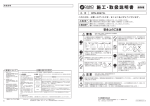
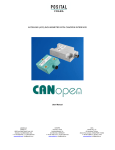
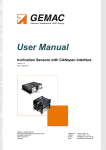

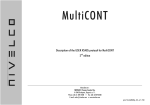


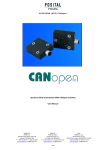
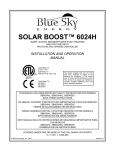
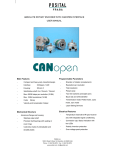

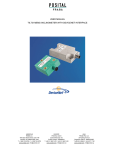

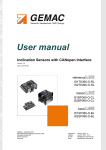

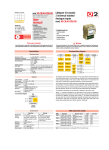
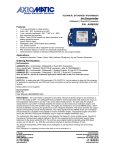
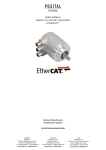
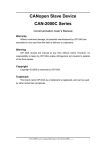
![Final Report - [Almost] Daily Photos](http://vs1.manualzilla.com/store/data/005658230_1-ad9be13b69bd4f2e15f58148160b0f22-150x150.png)
